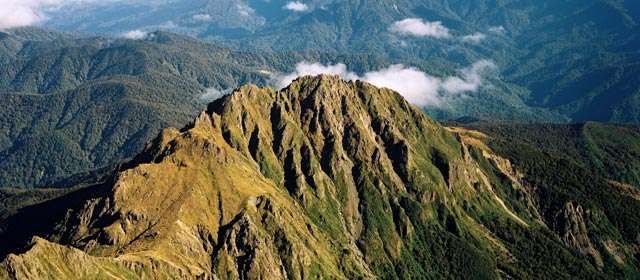Story summary
Lands
The homeland of Ngāti Porou is the most easterly region in the North Island. It runs north along the coast from Te Toka-a-Taiau at Gisborne, to Pōtikirua, inland from Hicks Bay. Mt Hikurangi is the tribal mountain, and the most important river is Waiapu, an ancient name also found on the Pacific island of Tahiti.
Ancestors
Ngāti Porou take their name from the ancestor Porourangi. His descendants were great warriors who established the tribe’s territory in the East Coast and Gisborne regions.
The original ancestor is the godlike Māui, celebrated in Māori tradition and in Ngāti Porou songs and haka. When he fished up the North Island, his canoe Nukutaimemeha became stranded on the first peak to appear, Hikurangi.
Other important ancestors are Toi and Paikea. In tradition, Paikea came to New Zealand from Hawaiki on the back of a whale.
Ngāti Porou also share ancestral links with neighbouring tribes such as Ngāti Kahungunu and Te Whānau-ā-Apanui.
Changes in the 19th century
In the 1820s Ngāti Porou people were massacred by Ngāpuhi, armed with European weapons. The arrival of Christianity brought a time of stability. Several chiefs signed the Treaty of Waitangi, and the tribe expanded economically.
In 1865 Ngāti Porou became divided. Some joined the spreading Hauhau movement, which opposed Pākehā taking Māori land. Others fought the Hauhau supporters, using guns supplied by the government.
The 1900s onwards
The politician Apirana Ngata was Ngāti Porou's most important leader. From farming to culture to sport, his influence in the first half of the 20th century was immense.
After the Second World War many people joined the drift to the cities, seeking education and a better life.
In 2013 the tribe numbered 71,049. Only about one-sixth lived in the tribal territory; most were in Auckland, Wellington and other urban centres.





